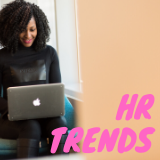
5 HR Trends to Monitor in 2020
HR departments are given more and more responsibility each year, oftentimes with budgets that don’t match. This means HR teams must constantly seek ways to innovate and stay on top of trends if they want to compete in the marketplace.
To that end, here are some of the top five HR trends to watch for in 2020. When reviewing them, consider how your organization may benefit by implementing similar strategies.
1. Employee personalization
Employees don’t want to be viewed as faceless cogs in a larger machine—they want to be recognized for the unique value each brings to the organization. This uniqueness is something employers are beginning to embrace too.
Companies are starting to offer more personalized benefits and online tools. Instead of offering one benefits package, employers are casting a wide net with niche options like tuition reimbursement and pet insurance. The idea is that providing a wide array of options will suit the unique needs of employees from any background and in any stage of their careers.
Some employers are going further and pairing these benefits with individualized online portals. Within these portals, employees can review their benefits, schedule doctor appointments and handle other needs specific to them.
2. A focus on wellness
Wellness has been a recurring trend for the past several years, with no sign of going away. Expect more employers to focus on wellness in 2020.
Holistic benefits are a common way of introducing wellness to an organization. These benefits address all aspects of well-being, including mental health and financial security. While these plans will differ in offerings, the idea is to provide employees with benefits that help improve their well-being beyond standard health coverage.
And employees are happy for the effort. According to a 2019 MetLife survey, over half of respondents said they’d be more interested in working for a company that offered holistic benefits. A similar number of respondents said they would also be more loyal to a company offering these benefits and that they would likely be more successful in their work and personal lives.
3. Workplace flexibility
Anyone working in recruiting will tell you that the workplace landscape is fluctuating. The 9-5 work shift is giving way to more novel constructions in this gig economy.
Some employers are more lenient than others, but the overall trend is that employees aren’t required to be in the office for eight hours every day. Some organizations allow for flextime—allowing employees to leave early one day and make up the time another day—and others simply let employees work their own hours each week, so long as they add up to 40.
While policies will differ by organization, the idea is that employees want some workplace flexibility when their personal lives require it. It could be something as simple as letting them work from home once in a while. Regardless of how you choose to handle flexibility within your organization, this trend will continue in 2020 and likely expand its prevalence as the number of remote workers increases.
4. Employee upskilling
As the employee personalization trend illustrates, employees want to be appreciated on an individual level. One way employers are showing their appreciation is through upskilling. Not only does this help employees feel valued, but it also helps fill knowledge gaps within the company.
And upskilling could be even more important than that. According to a report by Deloitte, the “inability to learn and grow” is the top reason why employees leave their organizations. As employers catch on, you can expect more employees to be cross-trained and encouraged to look for growth opportunities internally, lest they look toward other employers for career mobility.
5. AI-driven technology
Artificial intelligence (AI) will be a continuing trend for the foreseeable future. AI empowers organizations to achieve more than ever before, for a fraction of the effort. Commonly, AI is being used by HR to help administrate their human capital.
Some employers are using AI systems to autonomously screen candidates and move prospective hires through the application process, saving HR teams untold hours. Other employers are using AI to monitor employees so they can strategically address performance issues on an individual basis.
When it comes to tracking complex data sets, AI will be the answer for HR. Keep an eye out as this innovative technology permeates deeper into the HR realm.
Looking forward
While these trends are cropping up across the country, they might not necessarily work for every organization. However, they do indicate a general shift in the industry toward a more human-focused approach.
Keep these trends in mind when considering how your employees may benefit from similar programs. Implementing even a smaller-scale version of these initiatives may help give you an edge in this tight labor market.
Speak with Seubert & Associates, Inc. to discuss how you can use these trends to make the most of your HR team in 2020.

Employee Spotlight: Mark Hairston
Please help us welcome Mark Hairston to the Seubert Team as our General Industries Practice

The Health Benefits of Walking
By boosting physical fitness and enhancing mental well-being, incorporating regular walks into your routine can

Nip Seasonal Allergies in the Bud
The Centers for Disease Control and Prevention reports that one-quarter (25.7%) of adults suffer from
